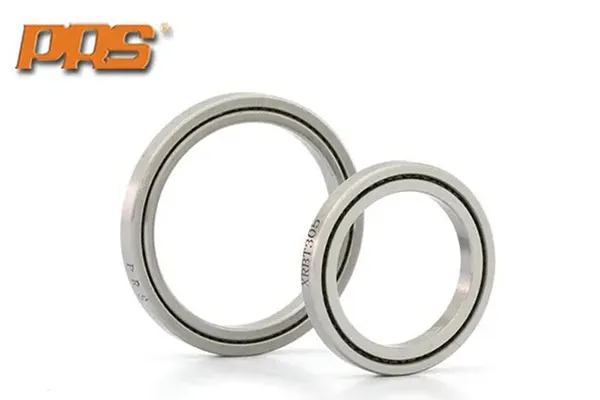Mail Us: [email protected] [email protected]
Call For Us: +86 18003790744 +86 18003790601 +86 18003797770
Crossed Roller Bearings: Operation Modes and Inspection Methods
Crossed roller bearings are a type of rolling bearing commonly used in high-load, high-speed operating conditions. Their operation modes and inspection methods are crucial to ensuring the normal operation of equipment. In this article, we delve into the operation modes and inspection methods of crossed roller bearings to better understand and maintain this vital mechanical component.
I. Operation Modes of Crossed Roller Bearings
Crossed roller bearings are specifically designed for high-load, high-speed applications, making them a preferred choice in various industrial sectors due to their unique structure and operation modes.
Unidirectional Operation: In unidirectional operation, the bearing can withstand loads from one direction. This design is often found in applications that primarily experience loads in a single direction, such as the joint sections of industrial robotic arms.
Bidirectional Operation: Conversely, bidirectional crossed roller bearings can withstand loads from two directions simultaneously. This design is commonly used in applications that require load-bearing capabilities in both horizontal and vertical directions, such as the rotating tables of machine tools.
The crossed arrangement of rollers in crossed roller bearings allows for both rolling and rotational motion.
Rolling Motion: This helps reduce friction between the bearing and the shaft, improving efficiency.
Rotational Motion: It enables the bearing to adapt to complex operating conditions, such as multi-axis movements in robot joints.
Some crossed roller bearings feature a preloading design, where a predetermined force is applied to enhance the bearing's rigidity and precision.
Preloading helps minimize internal clearance within the bearing, improving its response time to loads. This is particularly beneficial in applications that require high-precision control, such as CNC machine tools.
The crossed arrangement of rollers in crossed roller bearings contributes to their high rigidity, resisting deformation under external loads.
This design also enhances the bearing's precision, making them suitable for applications that demand precise positioning and control, such as semiconductor manufacturing equipment.
The operation modes of crossed roller bearings offer flexibility in different applications.
Their suitability for rotation, oscillation, and complex multi-axis movements makes them an ideal choice for various industries, including robotics, solar tracking systems, and medical diagnostic equipment.
The design of the rollers in crossed roller bearings results in reduced rolling friction, minimizing heat generation and wear.
This allows them to accommodate high-speed operation, meeting the demands of industrial applications that require high rotational speeds, such as high-speed machine tools and wind turbines.
Crossed roller bearings exhibit excellent axial and radial load-bearing capabilities, able to withstand complex loads from multiple directions simultaneously. This versatility makes them widely used in industrial applications that require a high degree of stability and reliability.

II. Inspection Methods for Crossed Roller Bearings
Visual inspection is one of the initial steps in bearing examination. It involves visually observing the bearing's exterior for any noticeable damage, deformation, or corrosion. The bearing surface should be smooth, free of cracks, and retain its metallic luster. Any abnormalities may necessitate further inspection or bearing replacement.
Clearance refers to the looseness of the bearing after installation. Using appropriate tools, the clearance of the bearing can be measured. Excessive clearance may lead to unstable vibrations during operation, affecting equipment performance. Conversely, insufficient clearance may increase friction and shorten bearing lifespan. Ensuring proper bearing clearance is crucial for smooth operation.
Manually rotate the bearing to assess its rotational flexibility. Any noticeable stiffness or unusual resistance may indicate a problem with the bearing, requiring further investigation. Additionally, listen for any abnormal noises during rotation, as these could be signs of damage or wear.
Measuring the play in a bearing is essential to ensure its proper function. Utilizing suitable measuring instruments, accurately determine the gap between the inner and outer rings of the bearing. The play should fall within an acceptable range based on the bearing type and specifications. Excessive or insufficient play can affect the bearing's performance, necessitating adjustment or replacement.
Adequate lubrication is critical to the smooth operation of bearings. Inspect the lubrication condition of the bearing, ensuring sufficient levels of lubricating oil or grease. Both excess and insufficient lubrication can lead to bearing failure. Additionally, check for any contamination in the lubricant and replace it if necessary, along with cleaning the lubrication channels.
In conclusion, crossed roller bearings are vital mechanical components whose operation modes and inspection methods significantly impact equipment reliability and stability. Understanding their operation modes allows for better bearing selection and application, meeting the demands of various operating conditions. Meanwhile, employing effective inspection methods helps identify and address bearing issues promptly, extending bearing lifespan and enhancing equipment efficiency. Regular maintenance and inspection of bearings are essential practices to ensure smooth equipment operation, reduce failures, and improve overall equipment reliability and safety.
 Hot News
Hot News2024-03-05
2024-03-05
2024-03-05
2024-03-05
2024-03-04